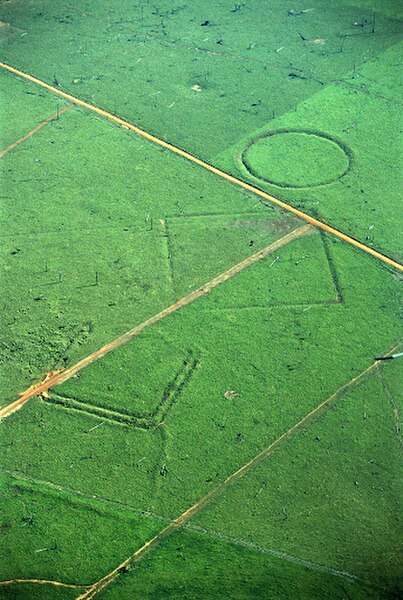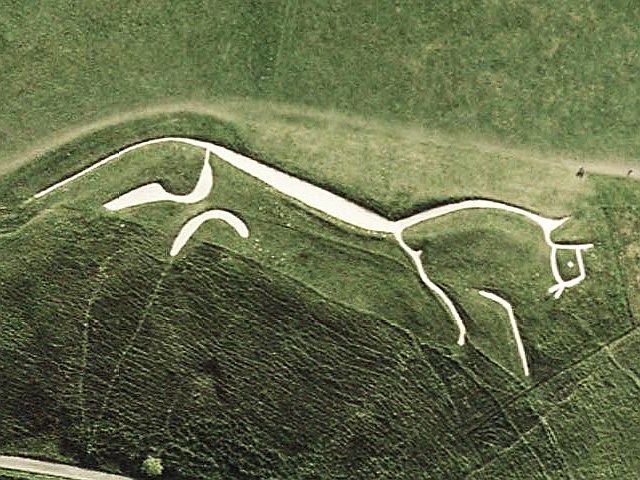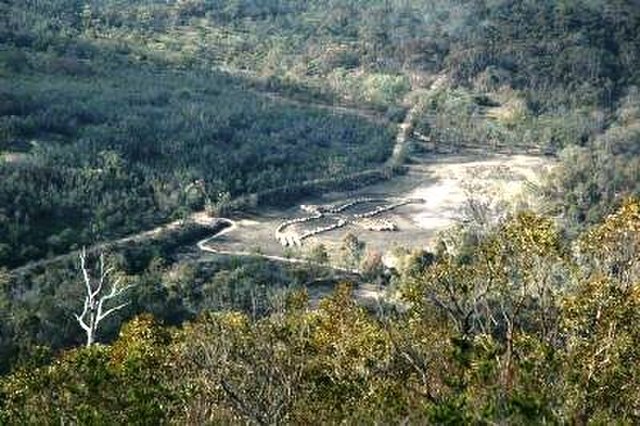Battalion Park is a geoglyph site in southwest Calgary, Alberta, Canada. It is located on Signal Hill, overlooking the Tsuu T'ina Nation, as well as lands formerly known as Camp Sarcee and later Sarcee Training Area, a military reserve used by the Canadian Forces from before the First World War up until the 1990s. The park extends over an area of 93 hectares, north of the Elbow River. Its heritage value is associated with its dedication to the heroic efforts of Albertan soldiers during the First World War.
Battalion Park
51st Battalion, Sarcee Army Camp in 1915
A geoglyph is a large design or motif – generally longer than 4 metres (13 ft) – produced on the ground by durable elements of the landscape, such as stones, stone fragments, gravel, or earth. A positive geoglyph is formed by the arrangement and alignment of materials on the ground in a manner akin to petroforms, while a negative geoglyph is formed by removing part of the natural ground surface to create differently coloured or textured ground in a manner akin to petroglyphs.
Geoglyphs on deforested land in the Amazon rainforest
The prehistoric English hill figure of the Uffington White Horse
The Nazca Lines in Peru. This photograph shows a depiction of a hummingbird
Bunjil geoglyph at the You Yangs, Lara, Australia, by Andrew Rogers. The creature has a wingspan of 100 metres and 1,500 tonnes of rock were used to construct it.






